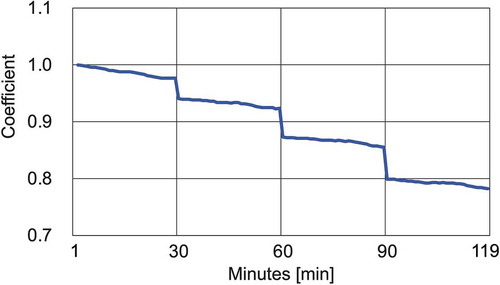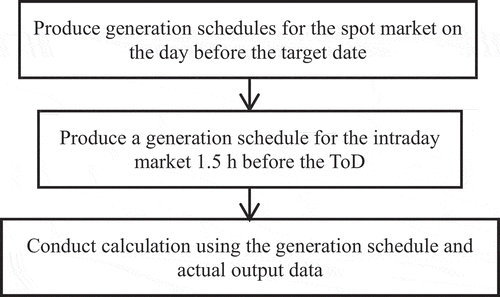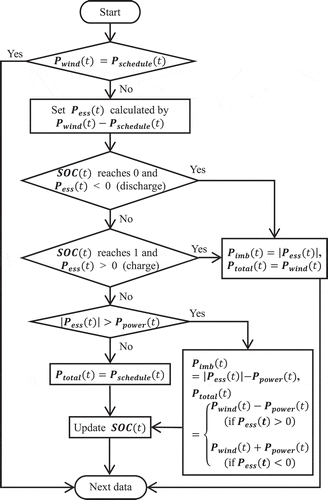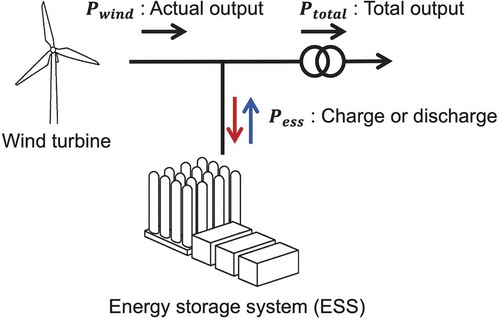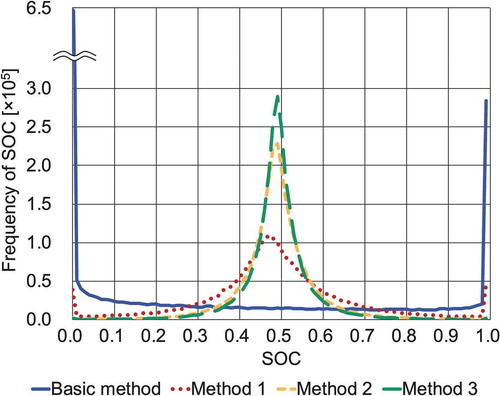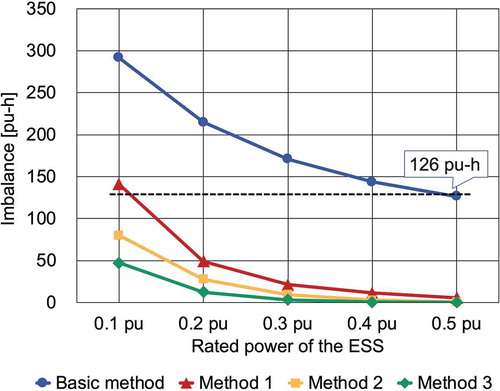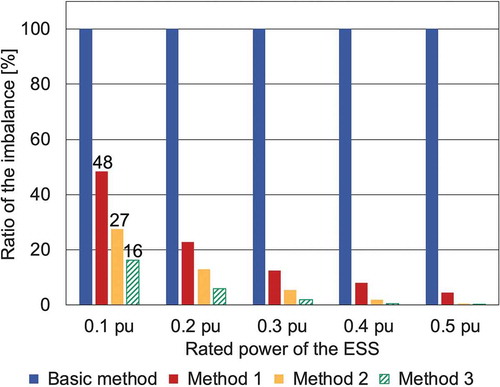Figures & data
Table 1. Outline of each market.
Figure 1. Production of generation schedules and adjustment of the actual output by using the ESS.
(a) One day before the target date: the generation schedules consisting of 48 products are produced for the spot market. Each product is based on the forecast data on the day before the target date. (b) One hour and a half before the ToD: the generation schedules for the intraday market are based on the new forecast data 1 h before the ToD. (c) ToD on the target date: the difference between the generation schedule and actual output is adjusted by using the ESS.

Table 2. Proposed scheduling methods.
Figure 2. Outline of the basic method.
(a) One day before the target date: the generation schedules consisting of 48 products are produced for the spot market. Each product is the same as the forecast data on the day before the target date. (b) One hour and a half before the ToD: the extra trade for the intraday market are the same as the difference between the generation schedule for the spot market and the new forecast data 1.5 h before the ToD.
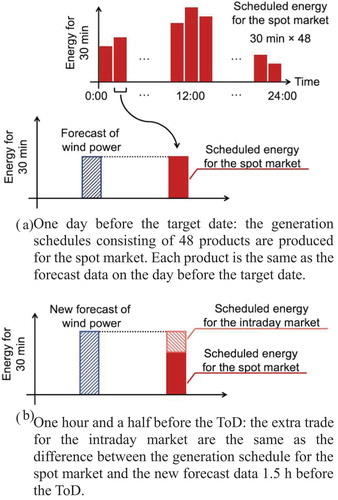
Figure 3. Outline of method 1.
(a) One day before the target date: SOC at 0:00 on the target date is estimated. The generation schedules for the spot market are designed by considering the SOC maintenance. (b) One hour and a half before the ToD: SOC at the ToD is estimated. The extra trade for the intraday market is produced by considering the SOC maintenance.

Figure 4. Outline of method 2.
(a) One day before the target date: SOC at 0:00 on the target date is estimated. The generation schedules for the spot market are produced by considering the SOC maintenance. (b.1) Error is estimated and forecast is adjusted with the linear regression model. (b.2) Generation schedule is designed using adjusted forecast. (b) One hour and a half before the ToD: the forecast error is estimated by using the model, and adjusted forecast data are calculated. SOC at the ToD is estimated, and the extra trade for the intraday market is produced by considering the SOC maintenance.
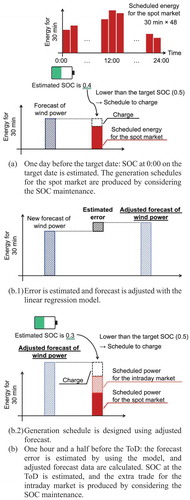
Table 3. Conditions for the linear regression model.
Figure 5. Outline of method 3.
(a) One day before the target date: SOC at 0:00 on the target date is estimated. The generation schedules for the spot market are designed by considering the SOC maintenance (this step is the same as Fig. 4(a)). (b.1) Adjusted forecast considering errors is estimated with the bagged trees model. (b.2) Generation schedule is designed using adjusted forecast (this step is the same as Fig. 4(b.2)). (b) One hour and a half before the ToD: adjusted forecast data is estimated by using the model. SOC at the ToD is estimated, and the extra trade for the intraday market is designed by considering the SOC maintenance.
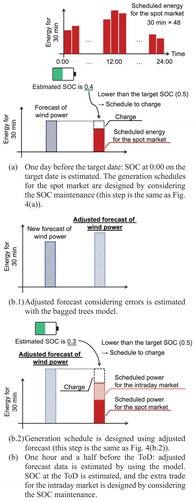
Table 4. Conditions for the bagged trees model.
Figure 6. Relationship between the predictor and response variables on each model.
(a) Linear regression model. (b) Bagged trees model.
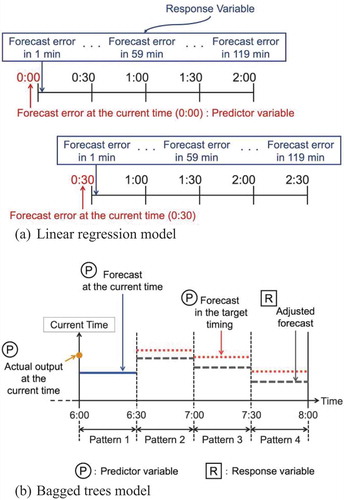
Table 5. Condition of the ESS.
Table 6. Results of trades.

